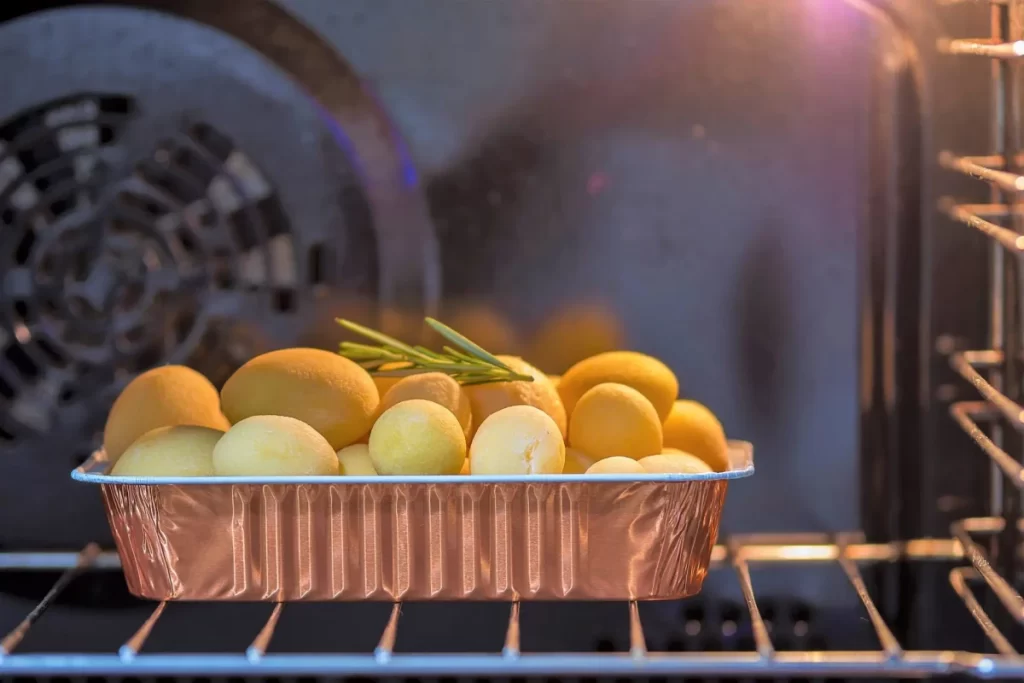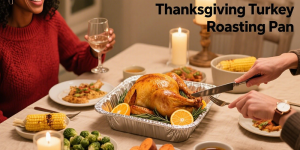Food container foil is actually an aluminum alloy foil roll for containers. The aluminum foil alloys used in container foil include 8011 aluminum foil, 8021 aluminum foil, 3003 aluminum foil and 3004 aluminum foil. As we all know, container foil is mainly used for food packaging, so we have to pay attention to material properties, environmental protection issues and quality certification.

So, what kind of aluminum foil is generally used for aluminium foil containers and lunch boxes?
Yongsheng Aluminum is an aluminum container foil production and processing manufacturer. The aluminum foil we produce is mainly used in the packaging and container market. At present, the hottest alloy in aluminum container foil is 3004 aluminum foil.
Material Properties
Temperature Resistant
Aluminum food containers are most concerned about heat resistance, that is, whether they can be safely used in microwave ovens and ovens. Heat resistance is mainly related to the aluminum foil alloy and thickness. According to GB/T 3198-2020 “Aluminum and Aluminum Alloy Foil” and FDA 21 CFR 175.300 standard:
- General Use: −50℃∼250℃
- Instantaneous Tolerance: up to 300°C (≤ 30 seconds)

Comparison of heat resistance of container foils of different thicknesses:
| Thickness (mm) | Continuous Temperature Resistance Upper Limit | Heat Deformation Temperature (℃) | Applicable Scene |
| 0.03 | 200℃ | 185℃ | Refrigeration/Microwave |
| 0.06 | 230℃ | 215℃ | Conventional oven baking |
| 0.10 | 250℃ | 240℃ | Industrial foil high temperature sterilization |
| 0.15+ | 280℃ | 265℃ | Special heat treatment process |
- 1235: Upper temperature limit 230℃
- 8011: Upper temperature limit 250℃
Not Acid Resistant
Aluminum foil may indeed react chemically with acidic foods, causing aluminum to dissolve. Because aluminum is an active metal, under acidic conditions (such as foods containing acidic substances such as citric acid, ketchup, vinegar, etc.), the surface of the aluminum foil will react chemically with the acid, causing aluminum ions (Al³⁺) to dissolve into the food. This reaction is more significant at high temperatures (such as oven heating) or when in contact for a long time.
We recommend that you avoid using aluminum foil containers to hold acidic foods and use glass, ceramic or heat-resistant plastic containers instead. And shorten the contact time between aluminum foil and acidic foods.
Security Certification
FDA Certification Standard
FDA certified food grade container foil is the US government’s food safety requirement for aluminum foil containers. FDA certification has material composition requirements, including alloy grades and coatings. The key indicators of FDA certified aluminum food containers are as follows:
| Test Item | Test Method | Limit Requirements | Typical Value Examples |
| Lead migration quantity | ASTM C927 | ≤0.01 mg/kg | 0.003 mg/kg |
| Cadmium migration quantity | EN 1388-1 | ≤0.005 mg/kg | ND (Not detected) |
| Arsenic migration quantity | ISO 17294-2 | ≤0.01 mg/kg | 0.002 mg/kg |
| Total chromium dissolution | FDA CPG 7117.05 | ≤0.1 μg/cm² | 0.05 μg/cm² |
| High temperature stability (250℃/2h) | ASTM D5422 | No deformation, no coating shedding | Pass |
Comparing FDA and EU standards:
| Parameter | FDA Standard | EU 1935/2004 |
| Test Temperature | 250℃ (Greases) | 175℃ (all food categories) |
| Migration Test Time | 2h | 4h |
| Nickel release | No requirement | ≤0.5 μg/cm²/week |
| Certification Period | 4-6 weeks | 8-12 weeks |
Food Grade Container Or Foil
Food-grade containers and foils have compliance marks, such as the FDA logo, LFGB knife and fork logo, GB 4806.9-2016 or qualified batch number FDC, etc.
There are also quick detection methods. You can soak it in 5% acetic acid solution for 2 hours. Unqualified products will appear turbid or the conductivity will surge; buy heavy metal detection test paper. If it is a qualified product, the test paper will show yellow, and unqualified will show brown-red; or put cooking oil in the container and heat it to 200℃ for 30 minutes. Qualified products have no bubbles on the surface and no irritating odor.
Cost Effectiveness
Aluminum Foil vs Plastic
The unit price of aluminum foil is usually higher than that of plastic, but it can withstand higher temperatures and is suitable for multiple heating, while plastic containers may deform or release harmful substances after multiple uses, resulting in more frequent replacement. In addition, the recycling rate of aluminum foil is higher, which may reduce long-term disposal costs, while plastic may incur higher waste disposal costs or environmental taxes.
If it is a commercial kitchen, aluminum foil may be more suitable in high-temperature environments and more economical in the long run; if it is for daily use at home, it may be more concerned with convenience and one-time costs.
Discount Offer
Discounts will be made based on factors such as purchase volume, cooperation period, and payment method. They may include tiered prices, annual rebates, prepayment discounts, etc.
In addition, users may not only pay attention to price discounts, but also to additional services, such as logistics support, customization services, quality assurance, etc. In particular, the quality of aluminum foil containers is very important. We have discussed FDA certification and food-grade standards before, so there may be clauses related to quality assurance in the discount policy.
Market dynamics should also be considered, such as the impact of raw material price fluctuations on discounts. Aluminum prices fluctuate greatly, and suppliers may adjust discount policies based on current aluminum prices, or provide price lock options. In addition, long-term cooperation may bring more favorable conditions, such as increasing rebates year by year.
In short, purchasing aluminum food container foil requires you to focus on material properties, safety certification and cost-effectiveness. If you want to know more about aluminum products, please contact us directly.



